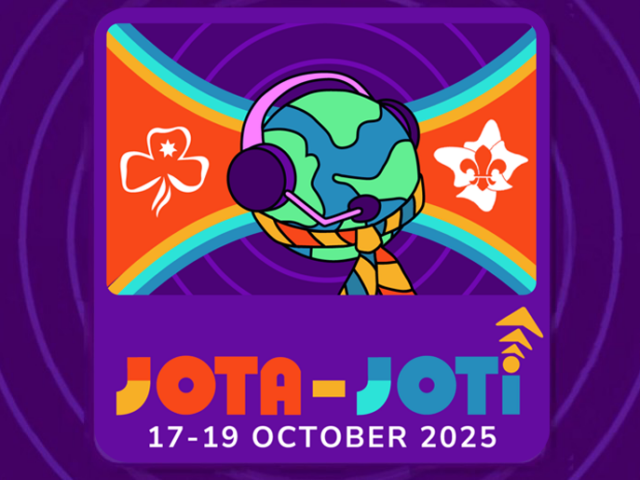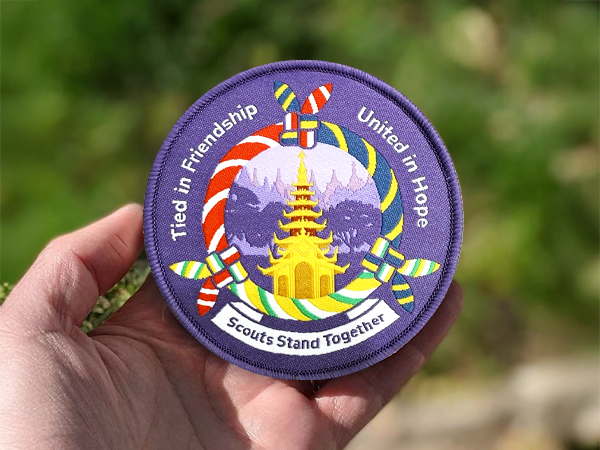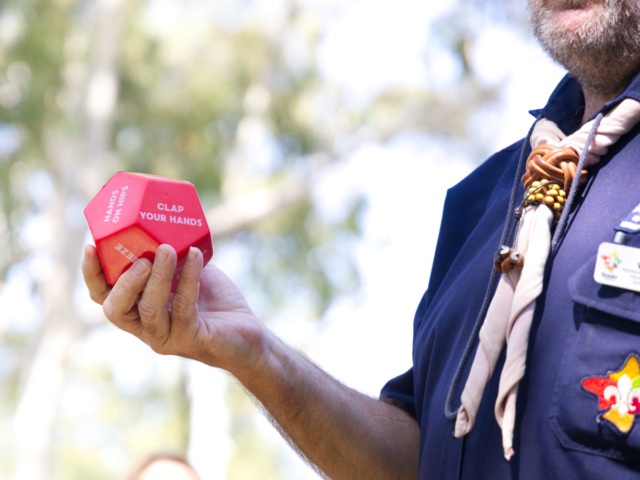New Youth Program
10 Buzz Terms for Australian Scouting in 2019 and What They Mean
![]()
In 2019, there’s going to be a lot happening for Scouts Australia, and you’ll come across a number of words and phrases that might be new for you. This quick glossary will help demystify some of these terms.
2019 will be a big year for us in Scouts Australia. We’ll start the year with AJ2019 – the 25th Australian Jamboree in South Australia, and many of our Scouts will attend the 24th World Scout Jamboree in North America in July. We’ll also celebrate the centenary of the Wood Badge with events around Australia and overseas.
But of course 2019 will bring the next big adventure for Scouts Australia with a brand new youth program. The big launch will be at AJ2019, with Groups to start adoption in April. While each Branch will take a bit of a different approach to implementation, here are 10 buzz phrases to look out for in 2019…
1 – The Adventure Begins
Actually, this is a buzz term for 2018. Not too sure what it is or where to start? It’s not too late to build The Adventure Begins toolkit into your Scouting program – get on it for term 4! Work through the checklist with your section council – each group of checklist items you complete earns a scarf ring for your section.
The Adventure Begins is the first step in any Scout Group’s transition to the new program. More importantly, this is about providing targets for best-practice Scouting, and a great reminder about ways to make sure our program is the best it can be. It gives your section targets for:
- Plan > Do > Review >
- SPICES
- The Scout Method
- Community Involvement
- Promise & Law
- Youth Leading, Adults Supporting
- Section Councils
Any new adventure starts with knowing why you’re on that path. Before starting the journey of the new program, head over to The Adventure Begins page and find out what you can do with your Joey Mob, Cub Pack, Scout Troop, Venturer Unit or Rover Crew to make sure the basic building blocks are in place.
2 – Participate, Assist, Lead
2019 will be all about youth members getting more actively involved in the whole cycle of Plan > Do > Review > through their activities.
The core of the new program experience sees every Scout taking a meaningful role in a range of different activities throughout their time in each section. The level of responsibility of course depends on the Scout’s abilities and will see all Scouts supported to develop leadership skills.
The core of the new program encourages each Scout to be an active member of a diverse program through participating, assisting and leading during section program activities. Scouts at all sections will be supported to actively participate, assist and lead in a certain number of activities across all the Challenge Areas (see point 6), and to learn about themselves along the way. This involvement will represent their progression through Milestones – there are 3 Milestones at each age section of the program.
3 – Patrols and Units
Patrols are a central element of how Scouts operates – the Patrol System is one of the 8 parts of our Scout Method! With the new program, each section will have Patrols. For Joey Scouts, membership of Patrols will be a bit more fluid than what we currently see in the Cub Scout and Scout sections. And Scout, Venturer Scouts, and Rover Scouts will be able to expand their adventure base with goal-oriented Project Patrols, together with other Scouts sharing a common interest (even from outside their section or Group!).
Fitting with the one journey approach, the term Patrol will be used across all sections – this is about providing a common and familiar language and experience. We know transitions from one section to the next can be hard, so why confuse things with a whole new set of language at each step along the way? This doesn’t mean that every experience of every Patrols across all sections will be exactly the same. That wouldn’t fit with the whole idea of Personal Progression, and wouldn’t really add to the adventure.
To keep with a one journey approach, every section will adopt the same terminology too. Where previously we had Mobs, Packs, Troops, Units and Crews, in the new program Scouts will now be a member of a Unit every step of the way. This language brings us in line with the standard terminology of the World Organisation of the Scout Movement.
Every section will have a Unit Council too – a meaningful opportunity for the Scouts within the Unit to be involved in the decision-making process, and to drive the direction of their program.
4 – One Journey
You might have heard this one before. The new program is built on a ‘one program’ mind-set, where the program journey is one continuous, consistent and familiar experience, with more and more challenges and exciting opportunities along the way. We know the transitions from one section to another are a difficult time for many Scouts; we’re also super-aware how valuable it is to support them through these transitions to the sections beyond. This is why this ‘one journey’ thing is such a critical part of the new program, and why it underpins so much of what Scouting will be into the future.
One journey is the term used to describe the Symbolic Framework, the element of the Scout Method, that ties the section journey together. It reminds us that every Scout is on a pathway of Personal Progression. The symbolism places each individual Scout on a journey across a mountain range, with each section presenting a new leg and a new challenge in that journey, with a whole range of different routes for the Scout to take along the way.
So what are the quick take-homes of ‘one journey’ and its influence in the new program?:
- There’s more of a focus on each Scout’s individual pathway.
- Each section doesn’t have its own separate program; it’s one program, with familiar experiences and new challenges.
- It provides the Symbolic Framework that sets the tone for each section and the adventures to come after progressing.
- All of us are responsible for encouraging and supporting each Scout’s journey across the mountain range.
5 – Achievement Pathways
The new program isn’t all about the badges.
Yes, you heard that right – say: ‘goodbye Award Scheme and hellooo Achievement Pathways’. The new program puts more focus on the experiences and achievement of personal best, and will see all Scouts challenging themselves through a diverse program of adventurous, fun, challenging and inclusive activities.
Rather than basing the weekly program around completing a specific set of badge requirements, the core of the new program sees all Scouts involved in the participate, assist, lead thing we talked about at point 2. Other achievements (like through the Outdoor Adventure Skills or Special Interest Areas) will happen at an individual level, and (especially in the younger sections) together with other members of the Patrol or Unit.
Are there still badges?! Of course there are! – But they don’t represent the ‘curriculum’ of Scouting. The one journey will take Scouts across the mountain range – the path they take is up to them. Some Scouts will strive to achieve the Peak Award in every section, but that’s not for everyone and that’s totally OK.
This new approach will need to involve some different ways of thinking and operating. This is about thinking outside the box, and taking a more youth-led approach to goal-setting and Personal Progression. After all, Personal Progression is an element of the Scout Method.
The parts of the Achievement Pathways will look very similar for each section. There are some differences, and no, the standard isn’t the same for everyone, but regardless of the section you will see familiarity in the Achievement Pathways.
6 – Challenge Areas
We’ve talked a lot about having a diverse program – this is where the Challenge Areas come in! These are four categories we use to Plan > the program.
Have you involved CREATIVE, COMMUNITY, OUTDOOR and PERSONAL GROWTH opportunities in your recent section program? These four categories make up the Challenge Areas, and help us brainstorm ideas for activities, with the help of some support tools if we need them.
Maybe you’ve planned the program in a similar way before using SPICES (Social, Physical, Intellectual, Character, Emotional and Spiritual development). Keep in mind, SPICES development will be different for each Scout, so we don’t use these to Plan > the program in this way – SPICES is a great tool for Reviewing > though!
A Plan > Do > Review > of your program will help to identify areas to work on to make your program more diverse. It could be that you’re lacking in a Challenge Area, or maybe that you need to improve the use of the Scout Method. Maybe the program isn’t providing enough of an opportunity to development in one of the SPICES. All are possibilities, and a process of Plan > Do > Review > will help identify these issues and improve the next Unit program. Tools will be there to help you along the way.
7 – Adventurous, Fun, Challenging, and Inclusive
These four words have been bouncing around for the last couple of years, but it’s time to focus on them a bit more.
Everything we do should be able to be described as adventurous, fun, challenging and inclusive. An engaging program will see all four of these used to their max.
- Adventurous: It can happen at any moment and in any situation. This is about taking a safe risk and expanding the comfort zone. If the activity isn’t doing that for all the Scouts involved, then it’s time to adjust somehow!
- Fun: This isn’t the major outcome we strive for, it’s about how we do what we do. Nothing we ever do in Scouting, especially in the program, should be dull or boring. We constantly need to consider how we can add some fun to what it is we’re doing – this is about building a positive energy and culture of fun to your Scouting environment.
- Challenging: This is about doing something that extends your skill level. Through challenge, each Scout will develop and progress as an individual. We encourage Scouts to challenge themselves through experiences that push their boundaries and lead to new levels of achievement.
- Inclusive: In Scouts, no one gets left behind. At the local level, this means everyone can be involved in the program and experience a similar level of adventure, fun and challenge. Are people disengaging, or reluctant to take part? Maybe they’re being accidentally excluded – remember to take a step back and consider things from their perspective.
The activities within the Unit program should be available to everyone, and no individual should feel excluded. When planning the program and its activities, work with the Unit leadership team to find the best balance of adventure, fun, challenge and inclusion.
8 – Community Involvement
Scouts across Australia belong to a whole range of communities – think the area around your home, your city or town, state, cultural background, school or interest area. Community is about sharing a common experience!
The Scout Method has been updated, and Community Involvement is recognised here as one of our key elements to learning through Scouting.
Of course Community Involvement has been part of who we are as Scouts for ages, and aspects like service to the community and citizenship are things we’re all familiar with. In the new program, we emphasise our role in the community even deeper. In addition to the Scout Method, community features in our Challenge Areas, the SIA, and our Promise.
Most importantly, we talk about Community Involvement as a whole range of things, more than just service and citizenship. This is about how we interact and engage with our communities. It’s about partnering with others, learning from other organisations and community groups, involving them our activities and being involved in theirs. This is about spending time with and in the community, and being seen, even without a focus on recruitment. This is about how we can make our communities better places to be, simply by being active, positive and welcoming within them.
9 – Young People at The Centre
Hang on… of course we put young people at the centre in our Group!
This may well be the case, and if so, keep up the good work! Having young people at the centre is best-practice Scouting, and there are Groups doing this well. Even if this is the case, I encourage you to take a step back and Review > this every now and then. We’ve all got things to improve in, and making sure our young people really are at the centre of what we do should be our first priority.
2019 will see more emphasis placed on putting Scouts at the centre – from Youth Leading, Adults Supporting, to personal reflection time and individual goal-setting. At a different level it’s about considering what’s best for a Scout to continue their Personal Progression along the one journey – this is about attitudes and mentalities. Maybe this means supporting a Scout to transition to a new Group because the change to Thursday nights for Scouts means they’ll have to give up soccer, or adjusting your going-up ceremony because part of it makes a Scout feel uneasy.
The New Youth Program has an increased focus on each individual young person – it’s about supporting them to achieve their potential through the SPICES. Having young people at the centre means we need to consider their needs and perspectives before acting – something we may not always be good at.
There are lots of ‘local rules’ out there, and many of these put up barriers that don’t consider young people at the centre. 2019 will present opportunity to re-consider many of these in light of this exciting new adventure for our organisation.
10 – Implementation
The new program was approved in July 2018 at a national level by all the Branches. While it’ll be ‘launched’ at AJ2019, not all Groups or Branches will be running the new program next year, or taking the same path to implementation. Some Groups may not be using the new program fully for a few years yet.
Some Branches are transitioning clusters of Groups onto the new program in a rolling approach, and by December 2021 we aim to have transitioned all Groups. Some Branches are focusing on components of the Program and implementing them across the whole Branch at once. No matter the journey your Branch takes to get there, the end result is the same, and you’ll continue to hear more from your Branch about your implementation model. It’s expected that all Groups will have at least started the transition to the new program by AJ2022.
Regardless of when you get onto the new program, take note of the points above, many of them you can start considering or trying already.
11 – YPR
This term is often used incorrectly, and it’s also time to say goodbye to it!
Often people refer to “when YPR comes in” or “my Unit is starting YPR soon” – the term to use here is actually “the new program”.
YPR stands for Youth Program Review – it started back in 2013 when Scouts Australia started to review the whole program from Joey Scouts to Rover Scouts as one, rather than the bit-by-bit reviews we’ve done in the past. With the approval of the new program, we’re no longer in review-phase – the YPR is no more! The result of the YPR is one program across five sections – a familiar journey with exciting new challenges along the way.
If you haven’t already, make sure your Group is starting the adventure– there is much more adventure to come, and some exciting challenges ahead. Be ready to approach Scouting in a new way – the new program starts soon!




